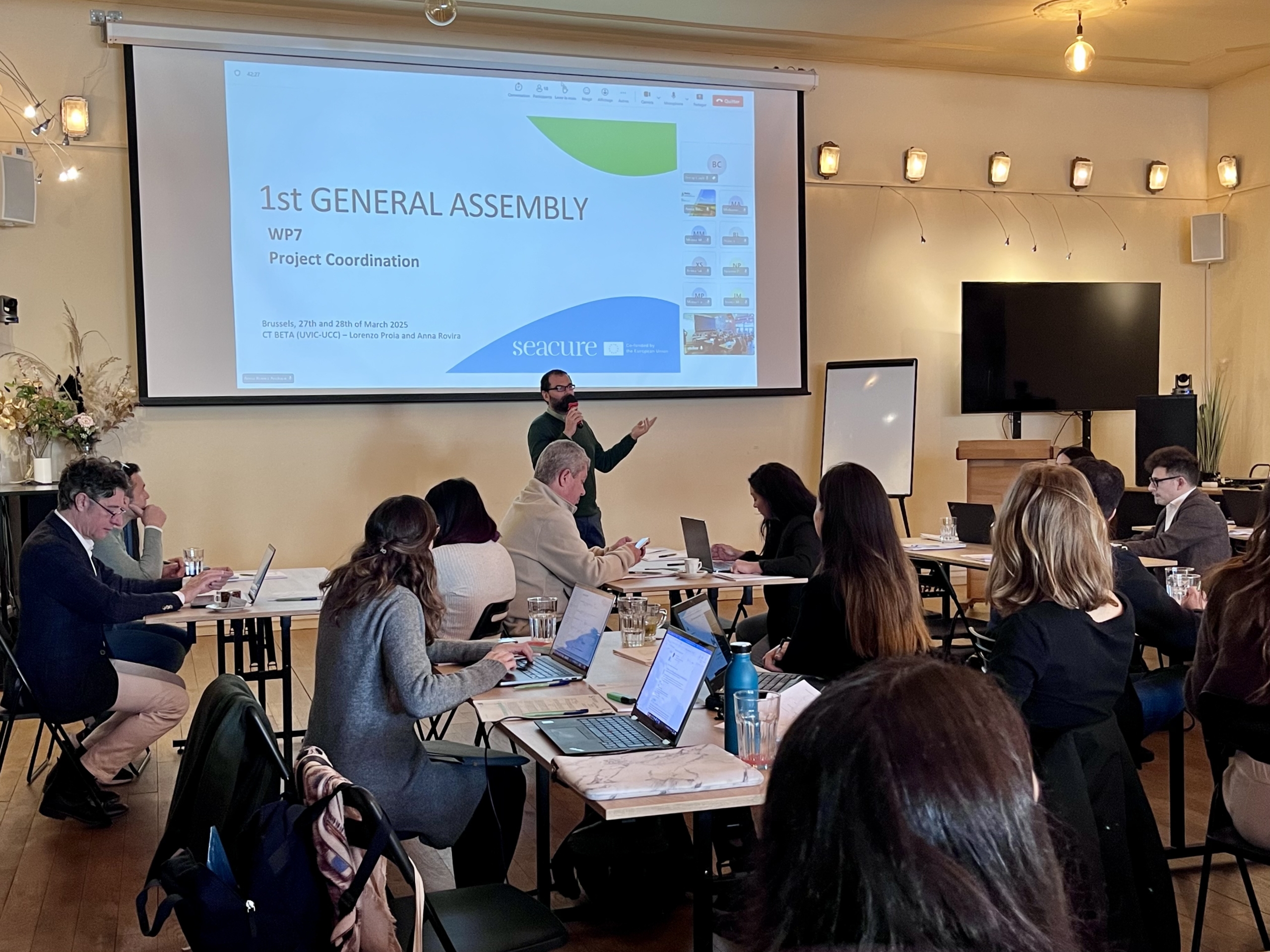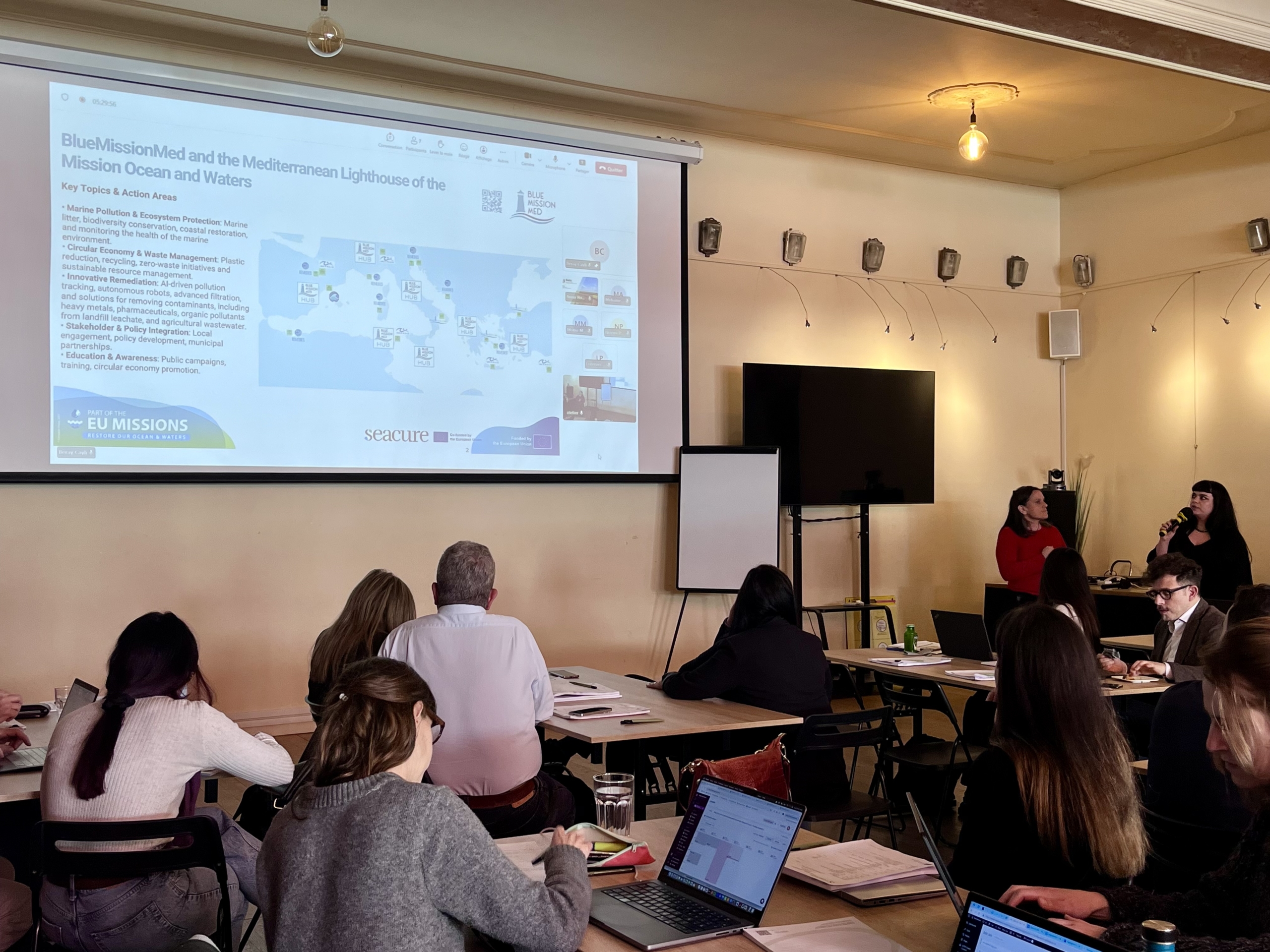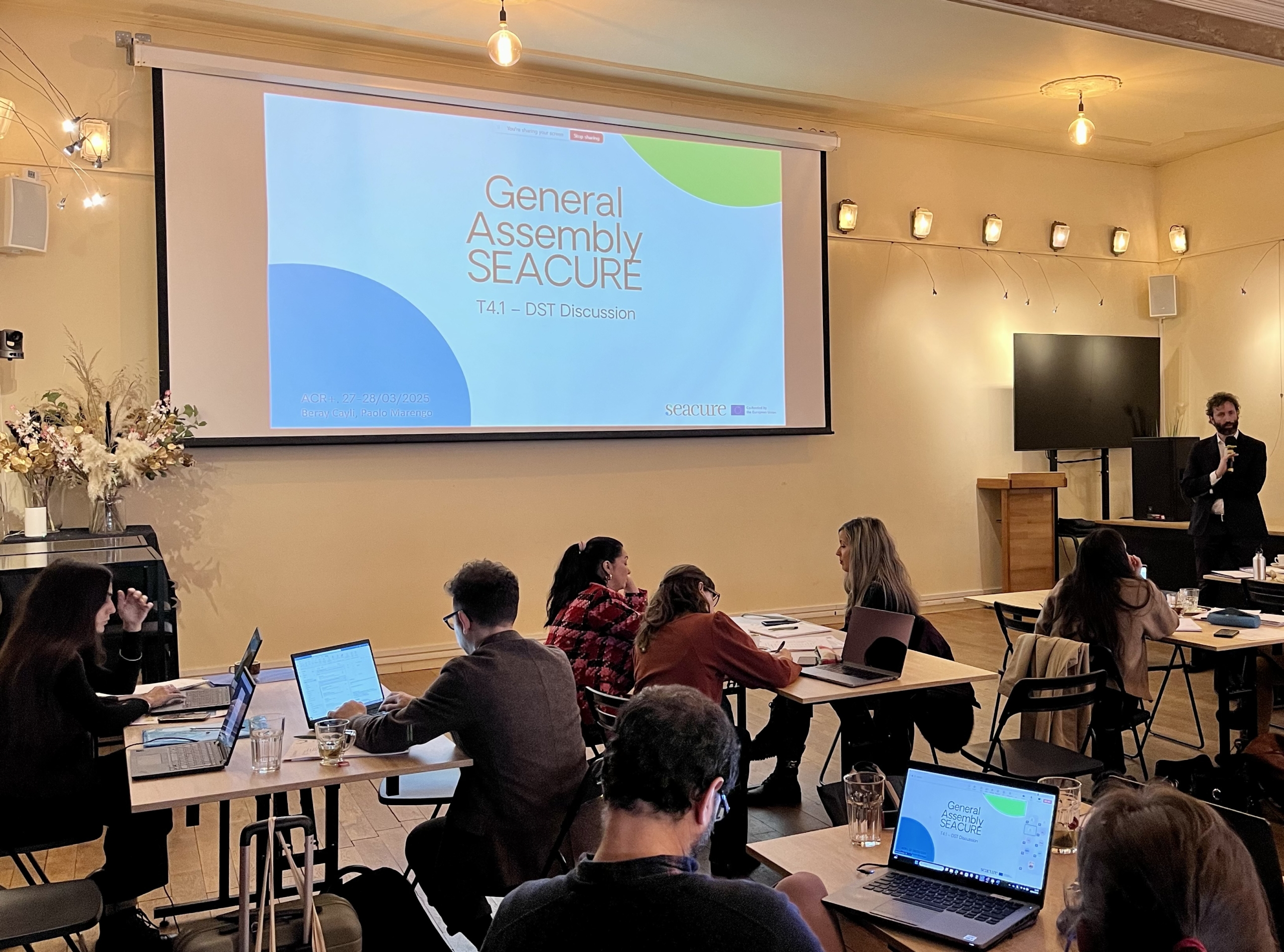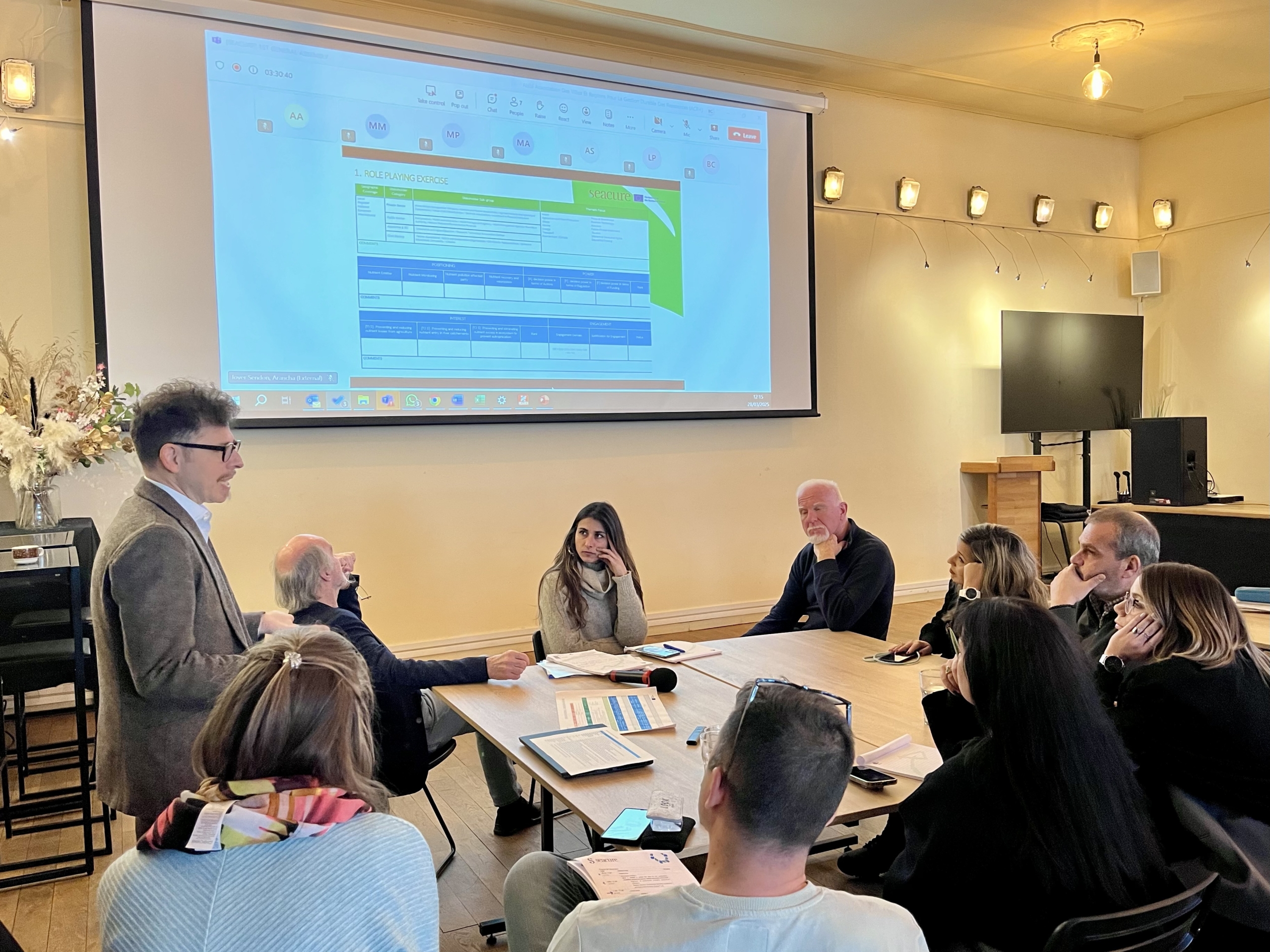On March 27th and 28th, the SEACURE consortium met in Brussels, Belgium, for its first General Assembly, marking a key step forward in accelerating effective strategies to combat nutrient pollution in the Mediterranean. The event brought together all 25 partners to share initial progress, set priorities and work together to drive our mission forward.
During the first day of the meeting, project partners assessed initial progress, exchanged updates on demo site solutions, and discussed next steps and bottlenecks for a coordinated approach. The session fostered open dialogue, allowing partners to exchange knowledge and align on key priorities essential for achieving SEACURE objectives.
Partners also had the opportunity to closely engage with the work of BlueMissionMed and the Mediterranean Lighthouse of the Mission Ocean and Waters, learning about how its support programme is building a strong operational framework to drive the Mission’s efforts in combating marine pollution through innovation and collaboration across key dimensions in the MED.



The discussions on day one covered key takeaways that will shape the way forward:
Leveraging the multi-actor approach for strategic regional insights. Partners shared key analysis insights from the project’s first phase, drawing on valuable input from multi-stakeholder roundtables held in December 2024. These insights will shape the project’s regional upscaling strategy, ensuring the SEACURE approach is tailored to local challenges, opportunities, and governance dynamics.
Demonstration site pilots. Leaders from the six territorial units shared updates with the consortium on solution design, permits, and implementation, showcasing exciting upcoming advancements in pilot construction as they move towards validating innovative nutrient management strategies in real-world operational settings.
Collaboration for regional scale up. Project partners discussed how to direct efforts towards building an ecosystem that fosters multi-level collaboration, with a focus on the strategic planning necessary to effectively scale up practices across the Mediterranean through cooperation and the transfer of technical capacity for replication in associated regions.
The second day of the General Assembly was dedicated to two in-depth, yet highly dynamic thematic sessions focusing on key practical aspects of the project. These sessions sparked fruitful dialogue among project partners, allowing for a deeper exploration and exchange of ideas on key considerations for the solutions multicriteria assessment and stakeholder engagement.


The first discussion session ‘What is needed to collect the data for the multicriteria feasibility assessment and its relation with Multi-Criteria Decision Support Tool‘, led by CETENMA, CREAF and ACR+, focused on the data requirments to evaluate nutrient budgets in SEACURE territorial units and the methods used to assess the feasibility of nutrient management practices at demonstration sites, covering techno-economic, environmental, and social aspects. The discussion concluded with a collaborative exercise on the DST, to further reflect on KPIs and the tool’s alignment with end-user needs.


The ‘Stakeholder Categorization and Engagement within Regional Innovation Ecosystems’ collaborative session, led by MedWaves, concluded the event, with project partners divided into three focus groups, each targeting a specific stakeholder profile (policymakers, private sector, civil society) to validate a unified approach. The session aimed to leverage partners’ experience and knowledge of local contexts to reflect SEACURE’s dual missions with multisectoral involvement and stakeholder diversity while ensuring practicality.
Beyond strategic alignment and constructive discussions, the two-day meeting provided valuable opportunities for networking and exchanging experiences as a transdisciplinary consortium.
As the project moves forward, insights gained will drive SEACURE’s efforts to demonstrate and scale effective solutions, engaging stakeholders at all levels to combat nutrient pollution from land to sea.
A big thank you to all partners for your valuable contributions and insights, with special thanks to the ACR+ team for welcoming us to Brussels and ensuring the meeting’s success.
Stay updated on project progress and announcements, and catch some key moments from our first General Assembly by checking out the video post on X (formerly Twitter) and LinkedIn.
